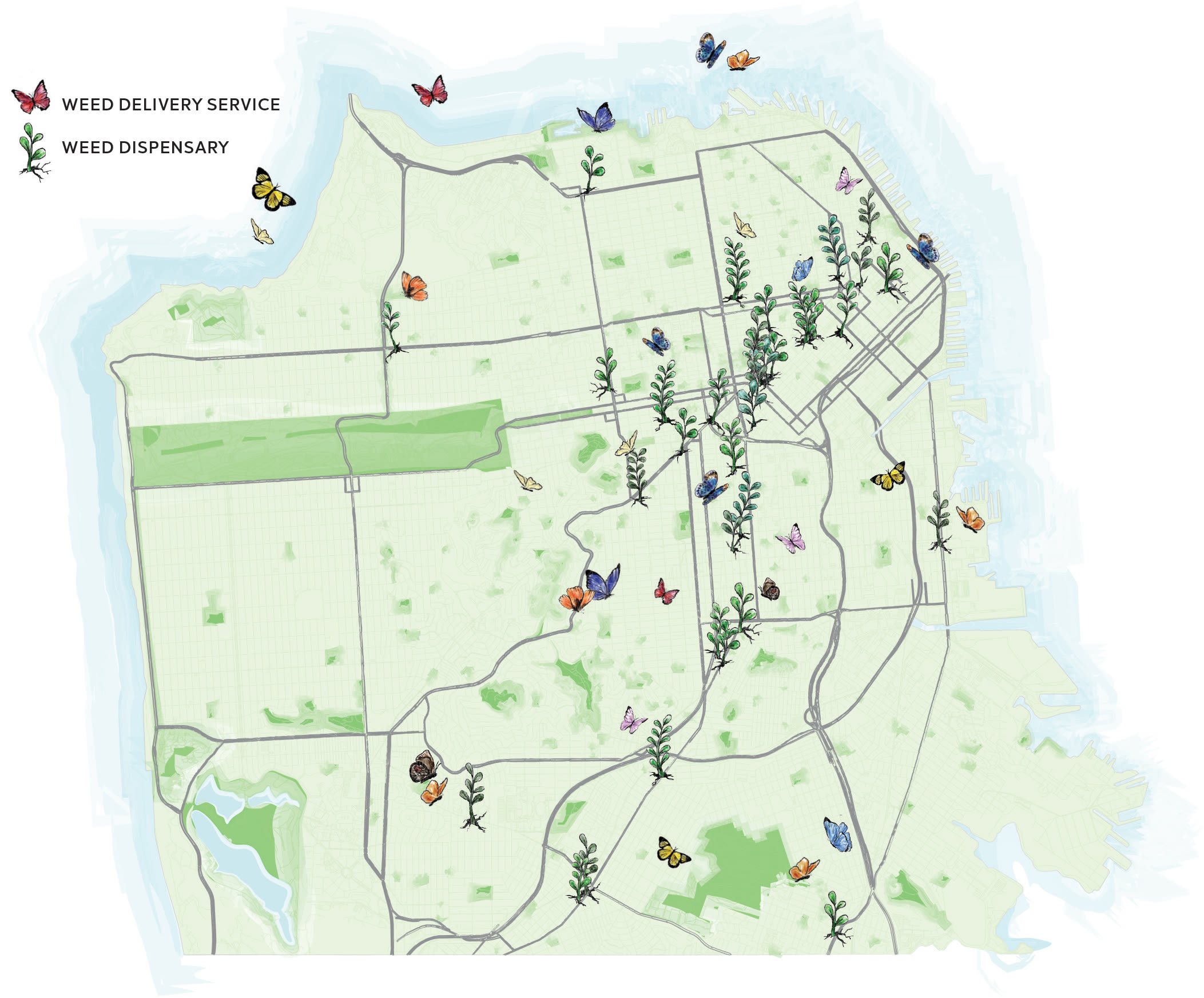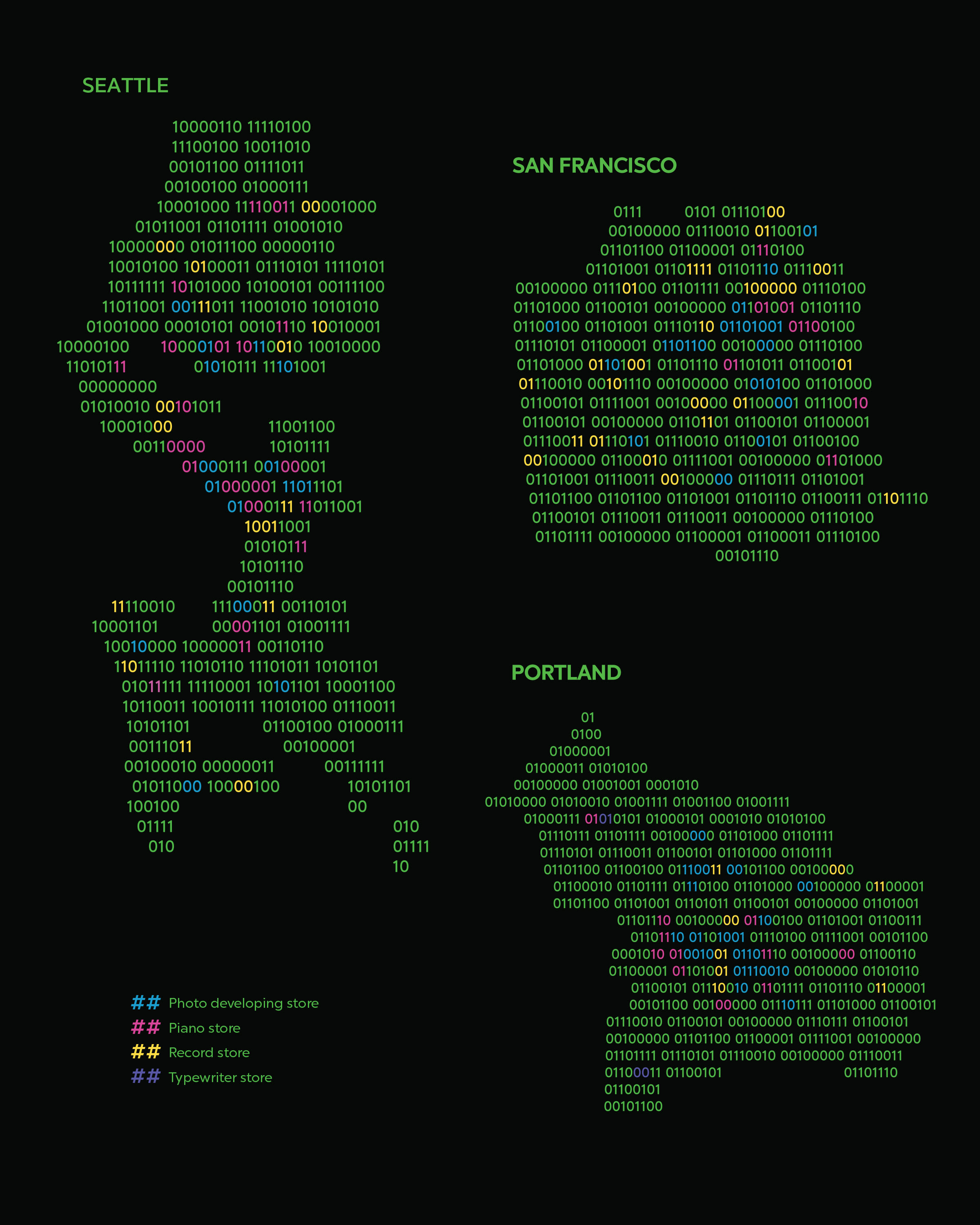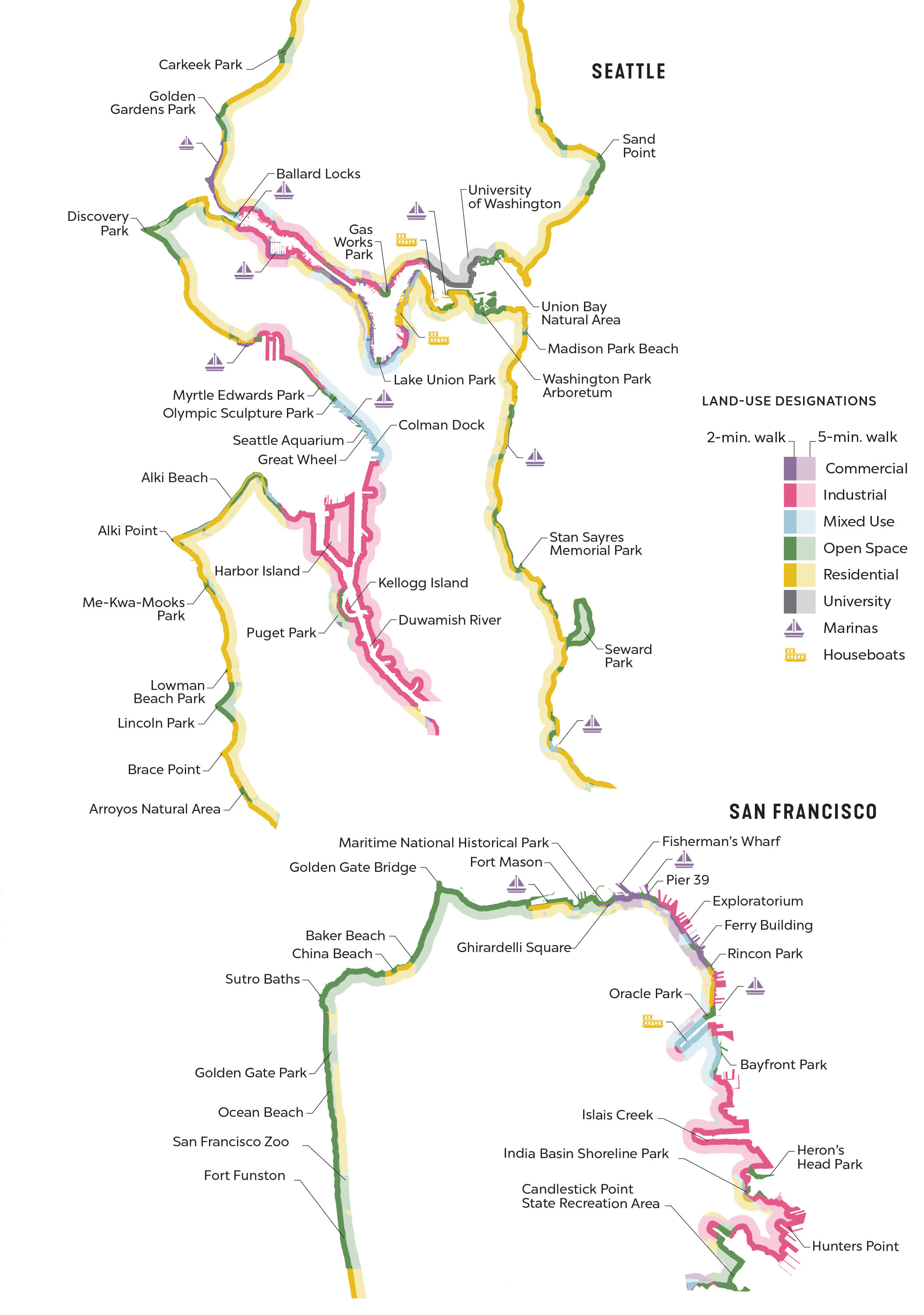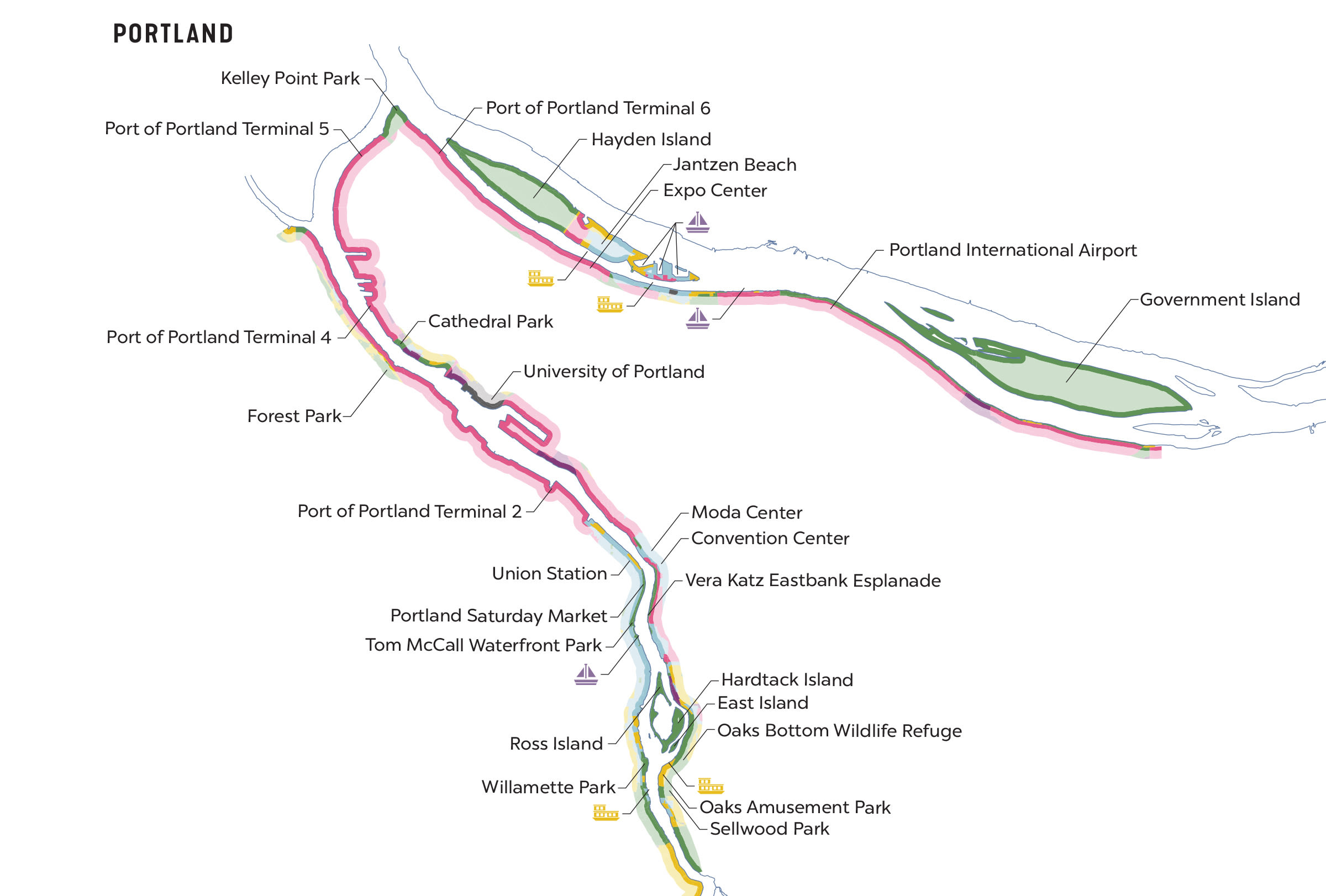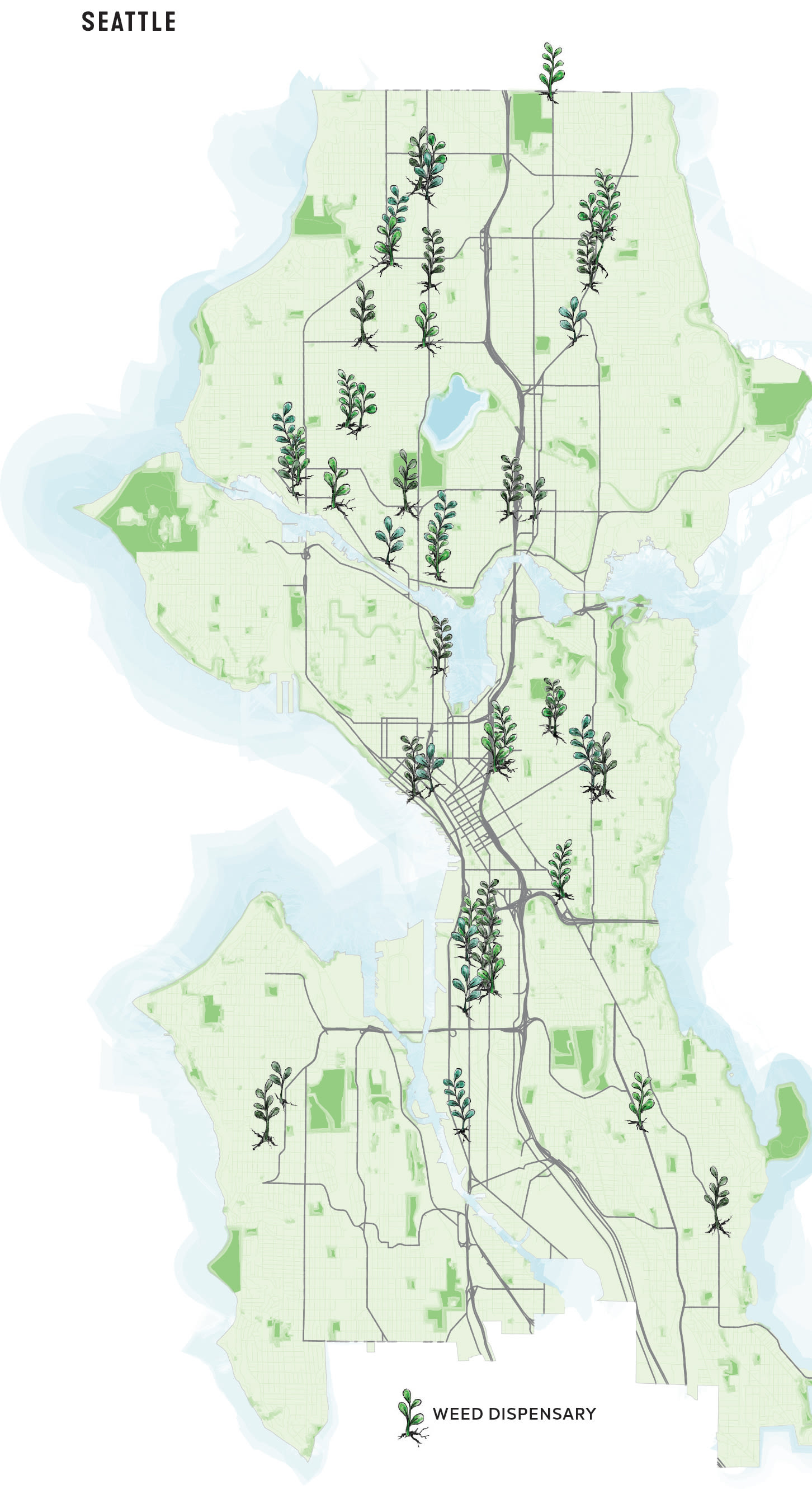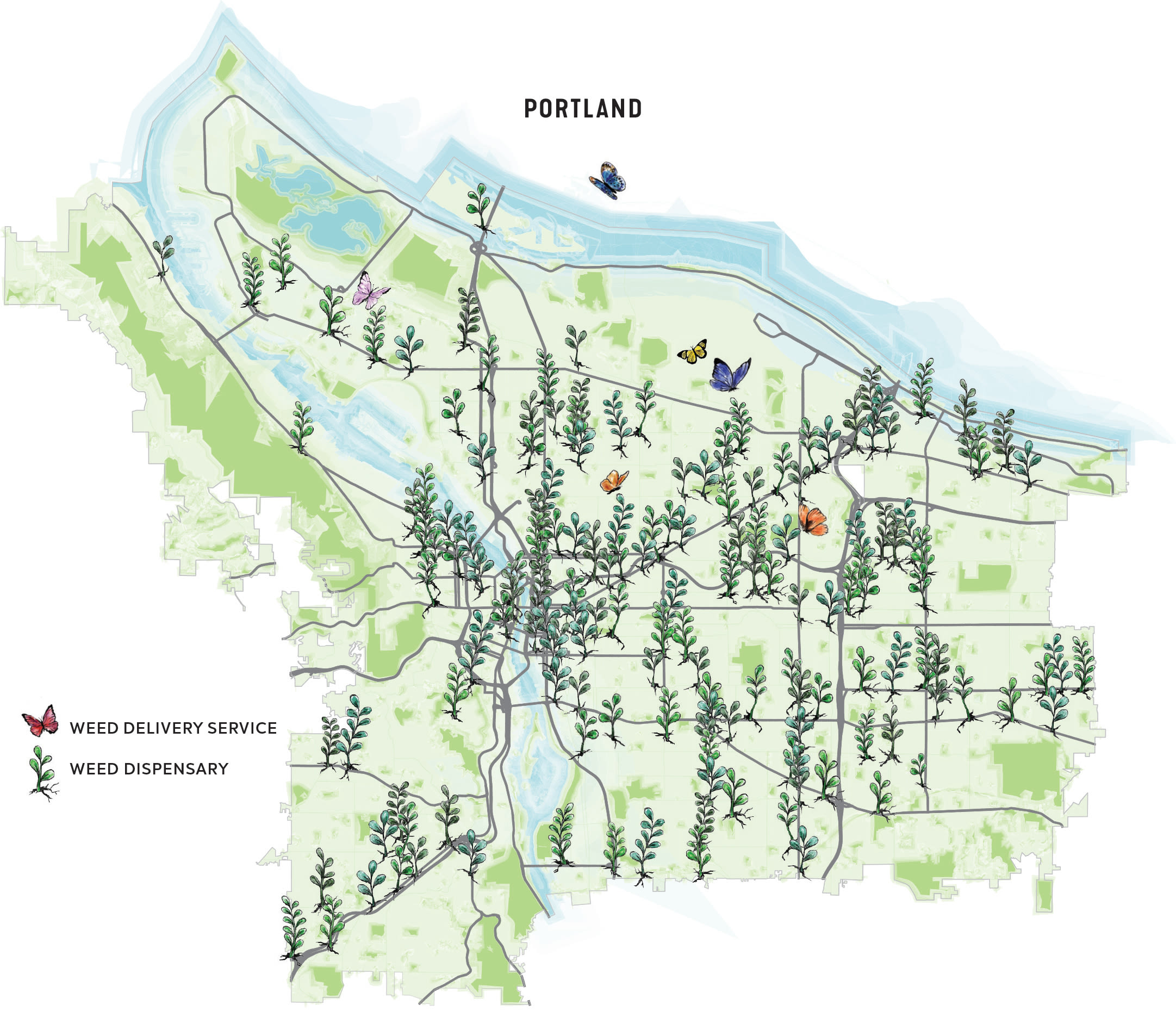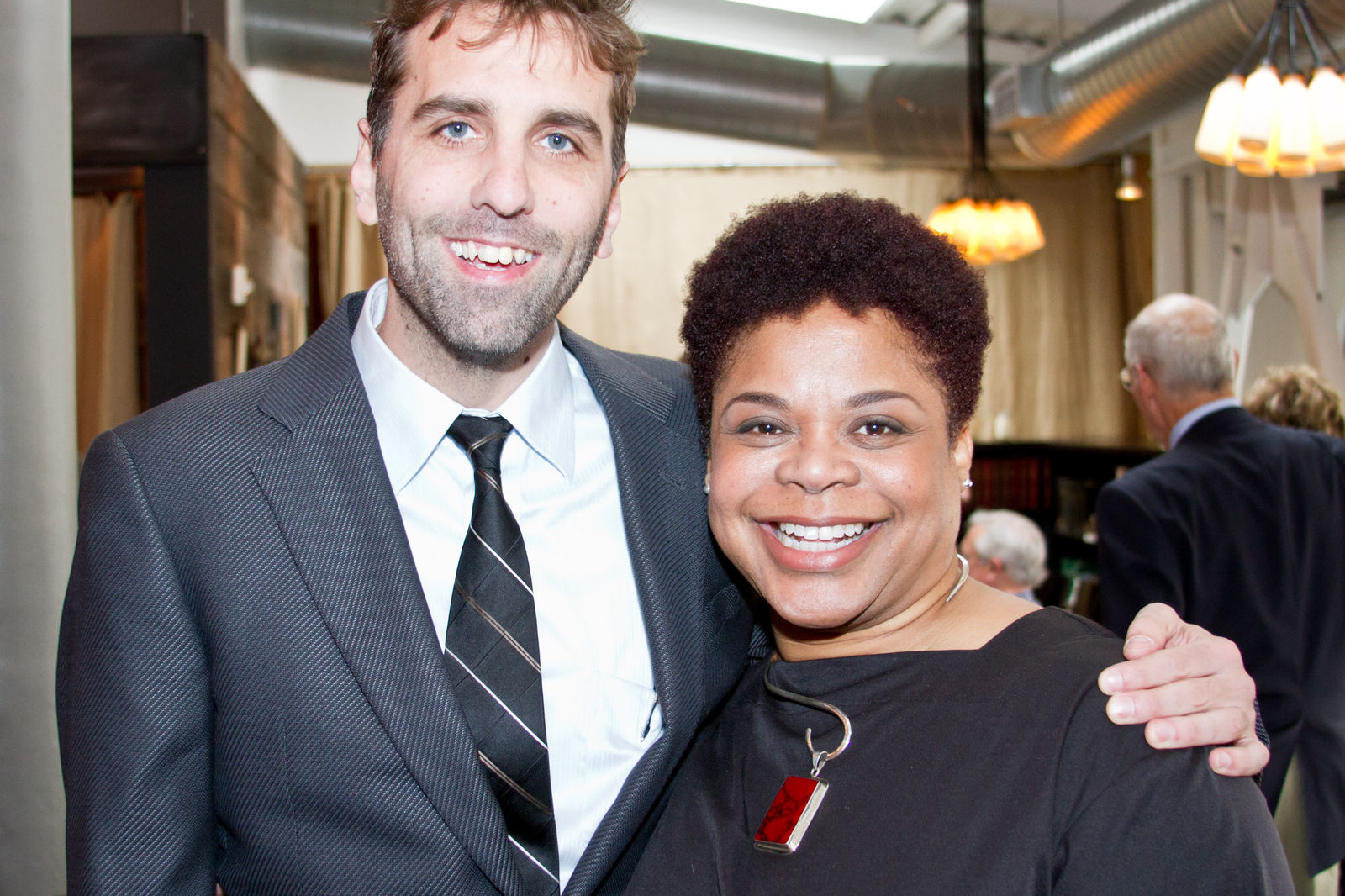A New Cultural Atlas Spotlights the Cities of the Upper Left
Seattle and San Francisco loom large in Portland’s collective consciousness—how do we measure up against the land of Steve Jobs and Harvey Milk to the south and the city that Bill Gates and Amazon hath wrought to our north?
(Don’t ask how much time Seattleites and San Franciscans spend comparing themselves to us. We don’t particularly want to know that answer.)
David Banis and Hunter Shobe, who teach in Portland State University’s geography department, set out to quantify this, via the second in a series of visually stunning cultural atlases they’ve authored with help from students and colleagues, using maps, graphics, essays, and photos to tell the story of a city.
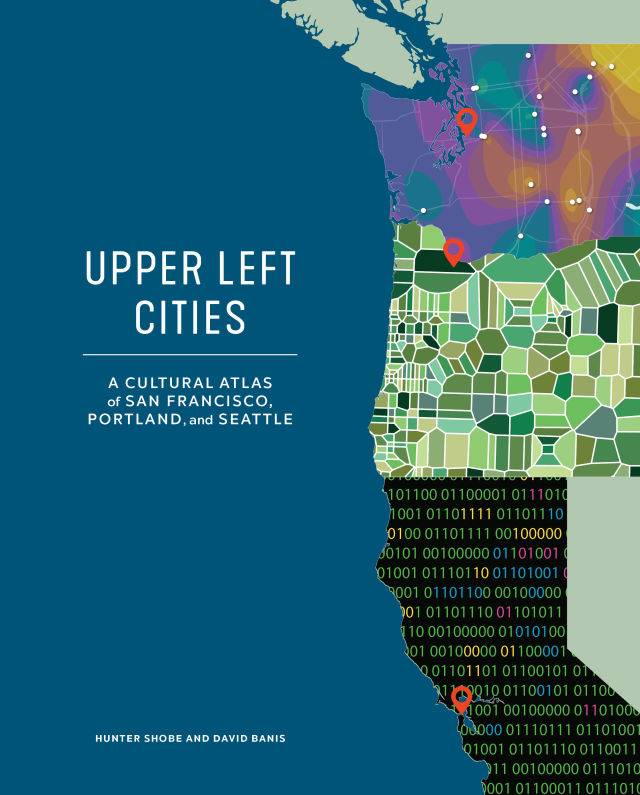
The atlas of the Left Coast's cultural capitals hits stores on September 21. The authors are doing a virtual event with Powell's on September 30 at 5 p.m.
Image: Courtesy Sasquatch Books
The result is Upper Left Cities: A Cultural Atlas of San Francisco, Portland, and Seattle, out September 21, from Sasquatch Books. (Their first effort, Portlandness, was published in 2015, and told just Portland’s story via maps charting everything from strip clubs to brunch lines.)
Their goal, they’ve written, is to “bring academic research to people who don’t usually read geography and urban studies journals, and bring storytelling and graphics to people who do.”
Given their raw material, narrowing down what to cover in the Upper Left atlas was no easy task. And from the start, the clear pecking order among the three cities was evident. For proof, look no further than their Sister Cities. San Francisco gets to partner with Paris, Sydney, and Seoul, Seattle gets Reykjavík, Mombasa, and Galway. And Portland? We have the less well-known Khabarovsk, Russia, and Ashkelon, Israel—but also, the intellectual and quirky foodie capital Bologna in Italy. For a more concrete example, consider housing prices. We in Portland are quick to bemoan that our median single-family housing price is nearly double the national average, but as documented by Shobe and Banis, it’s nearly four times that in Seattle. Double the cost of buying in Seattle, and you get the median house price in flush-with-tech-cash San Francisco.
“There are very few places for Portland that are as rich as the poorest part of San Francisco, vis a vis house prices,” Shobe says.
Still, all three of these cities have taken their turn as “It Cities,” Banis says. San Francisco in the 1960s with the Summer of Love, Seattle in the 1990s with the Nirvana era, and Portland in the 2010s with—roll your eyes all you want—the rise of Portlandia and the Etsy aesthetic. Banis and Shobe considered including Oakland and Vancouver, B.C., the other metropolises of Cascadia, but that proved too sprawling of a mission. (Better luck next time, Canada.)
And all three share some similar sensibilities, including an idealistic progressive streak, environmental bona fides, and an ever-growing lack of cultural diversity as home prices spiral to new heights.
But a flip through the book also reveals that, under the lid, there are some clear and present differences. For example, Portland’s waterfront is far and away the most industrialized; Seattle’s is dominated by residential areas and, surprisingly enough, San Francisco has the most waterfront green space accessible to the public. The tree canopy is denser in Seattle and Portland than it is in SF, but only Portland’s streets are dominated by Norway maples. Seattle’s got the most diffuse group of neighborhoods where the ratio of Biden to Trump voters topped 20 to 1—in Portland, that voting pattern is much more prevalent in our historic Kremlin, on the inner east side.
Researchers went to the library and dug out old copies of the Yellow Pages from the late 1980s to document that all three cities have seen a drop-off in the number of so-called “analog” shops that develop film and sell out-of-fashion items like record players. Today, only Portland still has a brick-and-mortar store that sells typewriters (two, in fact, at the time of publication). And when it comes to dispensaries, we leave both San Francisco and Seattle in the dust, per Banis and Shobe’s calculations.
Originally scheduled for publication a year ago, the atlas was pushed back due to the pandemic, which allowed Banis and Shobe to update and add information on the 2020 election, the Black Lives Matter protests of summer 2020, and the impact of coronavirus on different zip codes in each city. They know, they say, that living, breathing cities are constantly evolving—that typewriter store could close tomorrow—and so the atlas isn’t intended as a definitive reference, but a jumping off point to spark conversation.
“Each page pair has to tell a really good story that could stand on its own,” Shobe says. “Any page pair you look at spent 12 to 24 months in development—you work on it, come back to it, look at it again, show it to lots of people, and you start to learn what’s engaging.”
